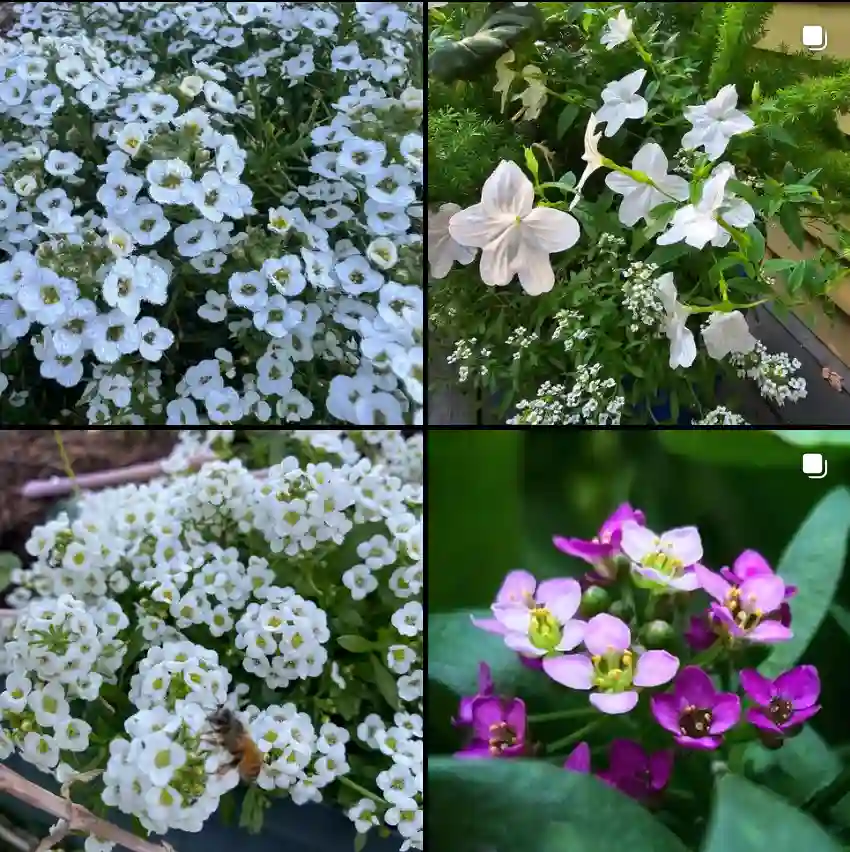FAQs About Campanula Rapunculoides
I’ve had quite a few encounters with Campanula Rapunculoides, often known as Creeping Bellflower. It’s a plant that’s both admired and dreaded in various gardens. If you’re dealing with this plant or considering adding it to your garden, you might have a lot of questions. Here’s a comprehensive guide based on my experiences and knowledge.
459 Species in Genus Campanula – Bellflowers
What is Campanula Rapunculoides?
Campanula Rapunculoides, commonly called Creeping Bellflower, is a perennial herbaceous plant known for its striking bell-shaped flowers. Originating from Europe, this plant is often grown for its charming, blue to violet flowers that bloom from summer into fall. It spreads quickly, which can be both a blessing and a curse depending on where you plant it.
How Does Campanula Rapunculoides Spread?
One of the most significant characteristics of Campanula Rapunculoides is its ability to spread aggressively. It primarily spreads through its underground rhizomes, which can send out new shoots some distance from the original plant. These rhizomes grow horizontally beneath the soil, producing new plants along their length. The plant also spreads by seed, although this is less common compared to rhizome spread. The combination of these two methods makes it quite invasive in some gardens.
Is Creeping Bellflower Campanula Rapunculoides a Weed?
In many areas, Creeping Bellflower is considered a weed due to its aggressive spreading and tendency to outcompete other plants. Its rapid growth can quickly overtake garden beds and lawns, crowding out more desirable plants. Its classification as a weed often depends on the local environment and how well it is managed in your garden.
How to Get Rid of Campanula Rapunculoides?
Dealing with Creeping Bellflower can be challenging, but it’s possible with some effort. Here are a few methods that I’ve found effective:
- Manual Removal: Digging up the plant can be effective, but it’s crucial to remove all rhizomes. Any remaining pieces can regrow. It’s best to do this in early spring before the plant starts its vigorous growth.
- Chemical Control: Herbicides can be used, particularly those that are systemic and target perennial weeds. Glyphosate is a common choice. However, you should be cautious with chemical use, as it can affect other plants and soil health.
- Mulching: Applying a thick layer of mulch can suppress the growth of Campanula Rapunculoides. It blocks light and helps prevent new shoots from emerging.
- Regular Maintenance: Persistent cutting or mowing can help control the spread, especially if combined with other methods.
How to Care for Campanula Rapunculoides?
If you’re determined to keep Creeping Bellflower in your garden, here’s how to care for it:
- Soil: It prefers well-drained soil but can tolerate a range of soil types.
- Light: It thrives in full sun to partial shade. More sunlight typically promotes better flowering.
- Watering: Regular watering is needed, especially during dry periods. However, it’s relatively drought-tolerant once established.
How to Propagate Campanula Rapunculoides?
Campanula Rapunculoides can be propagated through both seeds and division:
- Seeds: Collect seeds from mature flowers and sow them in early spring or late summer. They should be sown on the surface of the soil and lightly pressed in.
- Division: Divide the plant in early spring or fall. This method involves digging up the plant, separating the rhizomes, and replanting them.
What to Plant with Campanula Rapunculoides?
If you choose to plant Creeping Bellflower, consider companion plants that can tolerate its aggressive nature. Plants like hardy ferns, shade-tolerant hostas, or robust ground covers can work well. Just be prepared for the potential of Creeping Bellflower to spread into neighboring plants.
Can You Grow Campanula Rapunculoides Indoors?
Growing Campanula Rapunculoides indoors is not common. It typically requires outdoor conditions to thrive due to its size and growth habits. However, if you want to try, ensure it has ample space, bright light, and a suitable container.
Is Campanula Rapunculoides Toxic?
Campanula Rapunculoides is not known to be toxic to humans or pets. However, as with any plant, it’s a good idea to keep an eye on pets or children who might ingest plant material.
Common Problems with Campanula Rapunculoides
One of the most common issues with this plant is its invasiveness. It can quickly become a problem if not kept in check. Other problems include:
- Disease: It can be susceptible to fungal diseases, especially in damp conditions.
- Pests: Watch out for pests like aphids or slugs that may target the plant.
How Does Campanula Rapunculoides Compare with Other Bellflowers?
When compared to other bellflowers, such as Campanula Medium (Canterbury Bells), Campanula Rapunculoides is more aggressive in its spread. Canterbury Bells are typically more contained and used for ornamental purposes rather than as ground cover.
In summary, Campanula Rapunculoides can be both a beautiful and challenging plant. Its aggressive spreading habit requires careful management, but with the right approach, it can be a lovely addition to your garden.
If i die, water my plants!



